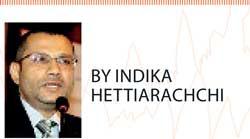23 Apr 2019 - {{hitsCtrl.values.hits}}

 Sri Lanka emerged as a potential hot-spot for investments after the end of civil conflict in 2009.
Sri Lanka emerged as a potential hot-spot for investments after the end of civil conflict in 2009.
Although the momentum gradually declined, Sri Lanka witnessed many Private Equity (PE) investments backed by local and foreign institutional funds. As the country has passed a decade since civil war ended, it is a good time to review some of the completed (i.e., value realized/ exited) PE investments that were made during this period as such review is important to understand long term PE prospects in Sri Lanka.
Majority of the institutional PE investments during this period came into service sector businesses in line with the general trend in post-war era investments. An important trend is that participation of many local and foreign government related entities in the PE market which is not unusual in a developing/emerging market. Reviewed below are some selected examples of PE investments that are realized during last ten years.
Leisure/hospitality is an industry that continued to expand during the last ten years. Recent sale of Marriot Weligama Bay hotel to a Singaporean firm shows that the local PE investor –Employee Provident Fund (EPF) has made an estimated capital gain of around 45 percent in 5 years on its Rs 405 million investment.
Over 200 percent capital gain made by the promoters of Marriot Weligama suggests that leisure investments are attractive despite low financial investor participation in this space. Another leisure investment made by EPF is the investment in Jetwing Symphony PLC. Although not realized, current market value of EPF’s stake in Jetwing Symphony appears to be the same as the investment cost.
Among PE investments made in the financial services space during this period is an investment made by a US- based impact investor called Creation Investments in Commercial Credit and Finance PLC in 2014/15. Creation Investments made a capital gain around 420 percent on its Rs 1.6 billion investment (in rupee terms) when it sold its stake to a Thai based financial firm in 2016 (a deal involving some controversies). Another unusual PE investment made during this period is the purchase of a combined 38 percent stake in Asian Alliance Insurance (now called Softlogic Life) by FMO and DEG (Netherland and German government investment firms) in 2013. In 2018, FMO sold its stake with 145 percent capital gain in rupee terms. (This investment was unusual as it is rare for a development finance institution to buy secondary market positions of listed firms.)
However, no such gains were witnessed in the high profile PE investment made by IFC (part of Word Bank) and DEG in Cargills Bank in 2015. Both investors sold their stakes in Cargills Bank within short period without capital profit. Another PE investment made by IFC is an investment made in Sanasa Development Bank in 2012. Although this investment is not exited yet, current market value of Sanasa shares suggests IFC’s investment value has eroded by around 43 percent in rupee terms. Similar erosion in value is also witnessed in PE investment made in Abans Finance PLC by local investor Ironwood Capital.
Although there was wide interest to invest in the education space, available opportunities were limited. A notable deal in this space is the buyout of Sri Lanka’s private university – Asia Pacific Institute of Information Technology (or APPIT) by Malaysian government linked Ekuinas in 2011.
Ekuinas reportedly sold its investment in 2018 with a 60 percent capital gain in Malaysian currency terms. Two local PE investors who invested in the education space were Si Lanka’s Guardian Capital Partners PLC and Australia’s Ataraxia Capital. Ataraxia Capital has reportedly exited from its Sri Lanka hotel school venture at a profit while Guardian Capital has written off an investment in the hotel school venture.
Another completed PE deal in the healthcare industry is the Emerging Markets investment firm Actis’ investment in Asiri Hospital Holdings PLC. Actis which has roots in the UK government investment arm Commonwealth Development Corp. received US$ 55 million in 2015 when it sold its stake to another PE fund after holding the investment for 3 years.
Actis’ cost of the investment was approx. US$ 32 million. Previously Aureos Capital also made around 70 percent capital gain in rupee terms when it sold its stake in Asiri Central Hospital in 2014 after holding the investment for 5 years.
Apart from above highlighted investments there were many PE investments made during last ten years. These include high profile investment made by global PE giant TPG Capital in Union Bank PLC. The US$ 114 million investment is yet to be exited although the market value of TPG’s stake in Union Bank has declined by over 40 percent
compared to cost.
Another deal to watch is the proposed sale of Grand Hyatt Hotel project in which EPF and other state financial institutions have holdings. The recently closed US$ 2.5 million investments in PickMe by IFC is also an interesting case study as the taxi-service firm is reportedly valued at several billions of rupees.
Although Sri Lanka failed to sustain the surge in investor interest during post 2009 period, Sri Lanka’s fundamental case for PE investments still remain. Moreover Sri Lanka fulfills many essential traits for the sustainability of PE. Mixed results from PE investments even within same industry is a testament to the maturity of the Sri Lankan market, although Sri Lankan PE market is capital-starved. This is why Sri Lanka could not absorb most of the post-2009 investor interest as available opportunities. Strategies/objectives of most these funds/investors had many mismatches with the available opportunities.
(The writer is an advisor in private equity, venture capital and project investments. He can be contacted via [email protected])
15 Nov 2024 59 minute ago
15 Nov 2024 3 hours ago
15 Nov 2024 3 hours ago
15 Nov 2024 3 hours ago
15 Nov 2024 3 hours ago